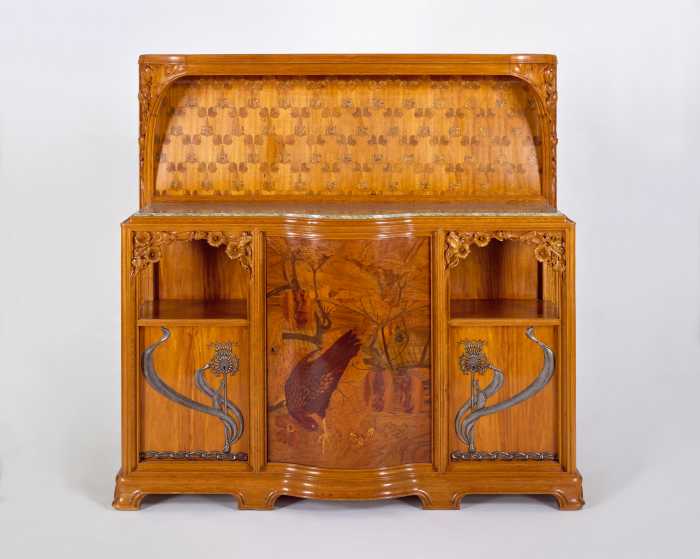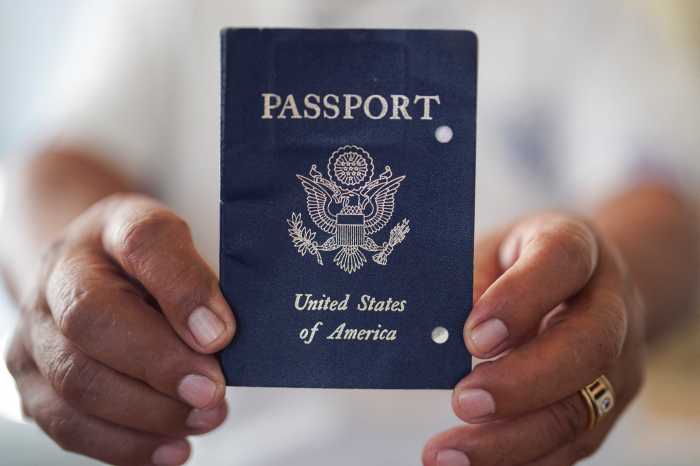After the Nazis came to power in Germany
in 1933, Joseph Goebbels wanted director Fritz Lang to be one
of the party’s major propaganda filmmakers, like Leni Riefenstahl
of "Triumph of the Will" infamy.
To his credit, Lang, who after making "Metropolis"
and "M" was among the giants of cinema in the early
days of sound, didn’t take the Nazis up on their offer (although
he did admit that, when he wanted to, Goebbels could be quite
charming).
Instead, he left his life, wife and wealth behind overnight,
hopping a train to Paris.
After making an undistinguished melodrama, "Liliom,"
in France – based on the same story that Rogers and Hammerstein
later turned into their classic musical "Carousel"
– Lang came to the United States in the summer of 1934.
And that’s where BAMcinematek’s series, "Fear and Fury:
The American Cinema of Fritz Lang" (Aug. 5-Oct. 22) comes
in. Last fall’s BAM series, "Fatal Passion: The German Cinema
of Fritz Lang," accounted for inarguably more masterpieces,
but "Fear and Fury" is an important and necessary re-evaluation
of Lang’s American films, all of which he made between 1936 and
1956. Fifteen of these will be screened, including a half-dozen
brand-new prints and three rarely shown archival prints.
By the time Lang arrived on these shores, after 15 years of directing
in Germany, his artistic sensibility had been fully formed. Lang’s
movies were informed by a heightened but utterly plausible sense
of paranoia, of a menace that lurked around the corner, down
the street or behind the closed door. The pathetic child killer
in "M," the faceless workers in "Metropolis,"
the deranged criminal in "The Last Will of Dr. Mabuse"
– these are characters that could have been visualized by no
other director.
Coming to Hollywood, then, seemed to be at odds with Lang’s style.
But his first American film, "Fury" (1936), showed
that Lang could put his own stamp on his new country: following
Spencer Tracy’s innocent man who is wrongfully blamed for a kidnapping,
Lang brought about an expansive exploration of mob hysteria.
Lang supposedly spent a year traveling throughout the States
before making "Fury"; he obviously found troublesome
problems that still resonate nearly 70 years later.
One of Tracy’s costars in "Fury" was Sylvia Sidney,
who impressed Lang enough for him to cast her in his next two
pictures: "You Only Live Once" (1937), a "Bonnie
& Clyde" forerunner pairing Sidney with Henry Fonda
as lovers on the lam; and "You and Me" (1938), possibly
Lang’s strangest movie, uneasily stapling together familiar romantic
comedy with a Brechtian distancing effect that includes song
interludes by none other than Kurt Weill.
During World War II, Lang directed a veiled anti-Nazi propaganda
picture that also, incidentally, works as a terrifically involving
thriller. "Hangmen Also Die" (1943) stars Brian Donlevy
as a paid assassin always a step ahead of the Gestapo as he hides
out during the French resistance. Bertolt Brecht’s stamp appears
here too, although he later disavowed his own contributions to
the screenplay.
Lang worked with several of the best-known Hollywood stars of
the ’40s and ’50s: Ray Milland stars as an unlikely hero in 1944’s
"Ministry of Fear"; Edward G. Robinson descends into
adultery and murder in 1945’s "Scarlet Street"; Barbara
Stanwyck and a young Marilyn Monroe star in an adaptation of
Clifford Odets’ play "Clash by Night" (1952); and Marlene
Dietrich, of all frauen, shows up in the Wild West of "Rancho
Notorious" (1952).
"The Big Heat" is the big one: this classic 1953 film
noir features Glenn Ford as a methodical detective who investigates
a colleague’s suicide. In this, the most visually bleak and morally
perplexing of all Lang’s American films, Lee Marvin chillingly
plays the villain; the scene where he disfigures his moll (Gloria
Grahame) with hot coffee remains one of the most disturbing movie
moments ever.
Lang’s penultimate American movie, 1956’s "While the City
Sleeps," breathlessly plays with several parallel stories
and many more unlikable characters on the sidewalks of a Manhattan
plagued by a sick killer. After 20 years, Lang grew tired of
Hollywood’s restrictions and longed for artistic freedom. Unfortunately,
the pictures he made in France upon his return there are all
but forgotten.
Lang’s last big movie was "Contempt," Jean-Luc Godard’s
cynical view of moviemaking, in which Lang played himself with
gleeful nastiness. But he would never direct again.
Ironically, Fritz Lang died at age 85, nearly blind and barely
remembered … in Beverly Hills.
"Fear and Fury: The American Cinema
of Fritz Lang" plays at the BAMcinematek, 30 Lafayette Ave.
at Ashland Place, Aug. 5-Oct. 22. Tickets are $9, $6 for students,
seniors and children under 12. For a complete schedule of films,
call (718) 636-4100 or visit www.bam.org on the Web.

























